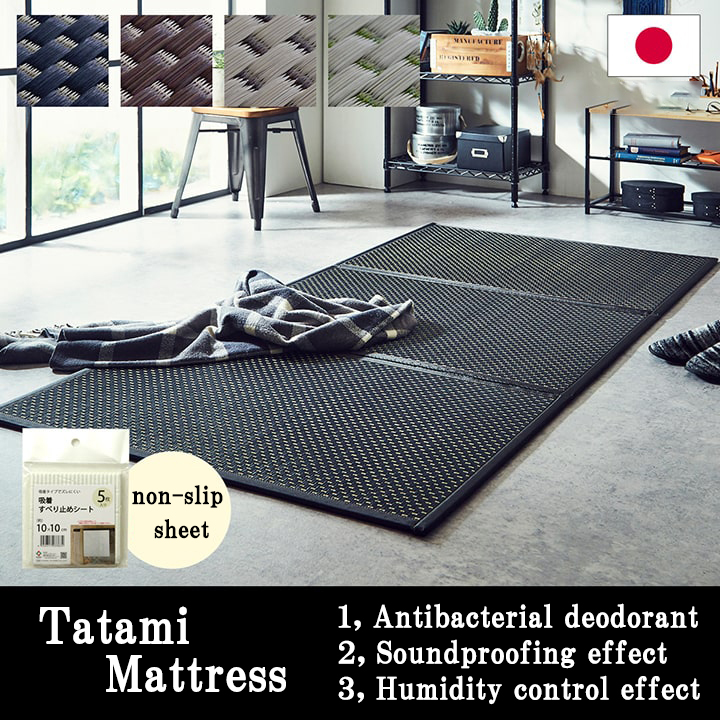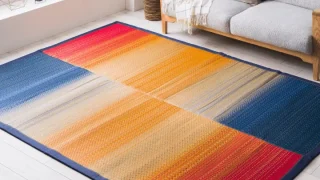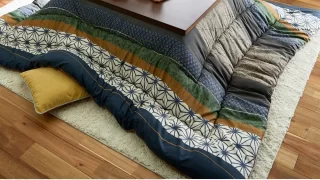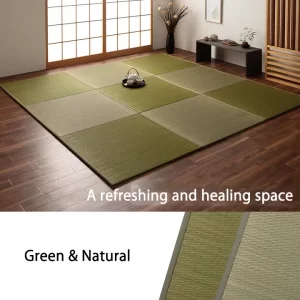Precautions when using a mattress on a tatami mat
Some people may want to put a mattress directly on the tatami mat for various reasons, such as wanting to sleep on a mattress instead of a futon, or not wanting to put a bed because the room will be too small.
We will introduce how to choose a mattress and points to note when placing it directly on the tatami mat.
Contents
Lay a mattress on the Tatami mat
Can I put a mattress directly on the tatami mat?
No problem at all. Of course, you can put a mattress on top of the tatami mat.
However, since the mattress was not made to be used on a tatami mat in the first place, it requires usage and daily care. Also, please note that depending on the type of mattress, compatibility with tatami mat may be good or bad.

The mattress may damage the tatami mat
A typical tatami mat uses tatami Rush Grass, which has good breathability and a humidity control effect, so you can spend a comfortable time. However, be aware that some types of mattresses can compromise this breathability.
In addition, cheap polystyrene and nylon tatami mats, not Tatami Rush Grass, are less elastic and less breathable than Rush Grass tatami mats, so you need to be careful when choosing a mattress.
In addition, placing a heavy mattress on top of the tatami mat will damage the tatami mat, so the weight of the mattress is also an important point.
For example, pocket coil mattresses have good air permeability, but they are quite heavy, so there is a high possibility of damaging the tatami mat. High resilience urethane mattresses have no problem with their weight, but they often have poor breathability. No need.
How to choose a mattress to use on the tatami mat
When choosing a mattress to be placed directly on the tatami mat, it is necessary to consider not only comfort but also breathability that does not cause mold, weight that does not damage the tatami mat, and ease of daily storage. .
When using a mattress on a Tatami mat, you should be aware of mold growth. If moisture accumulates between the Tatami mat and the mattress, it creates an environment where mold can easily grow, so it is important to choose a mattress that has good breathability.
A well-ventilated mattress will not allow moisture to remain between the Tatami mat and the mattress, which will prevent mold from growing. In addition, good breathability is an important point in terms of sleeping comfort and not damaging the Tatami mat.
We recommend a Tatami mat that can be easily folded and carried around.
If you place the mattress directly on the Tatami mat, you should avoid leaving the mattress on the floor to prevent mold from growing. Therefore, considering how to store it every time, it is recommended that the mattress used on the tatami mat can be easily folded and carried.

Be careful when using it on a Tatami mat mattress!
When using a mattress on tatami mats, there are some things to be aware of. Please remember that this is an important point for using the mattress comfortably on the tatami mats.
Do not leave the mattress on the Tatami mat.
When using a mattress on a Tatami mat, you should never leave the mattress on the floor. Moisture such as sweat from sleeping will accumulate between the Tatami mat and the mattress, and if left as it is, mold will easily grow. one
In addition, since humidity is a preferred environment for mites, not only mold but also mites can occur. Not only is it unhygienic, but it can also pose health risks.
Maintenance when using Tatami mats and mattresses
In order to continue using the mattress comfortably on the Tatami mat, daily maintenance is the most important thing. For a comfortable sleep, it is necessary to create a good environment for both the mattress and the Tatami mat.
We will show you how to make it easy on a daily basis.
Place a dehumidifying sheet on the Tatami mat
Before placing the mattress directly on the Tatami mat, spread a dehumidifying sheet and then place the mattress on top of it to improve ventilation. It has high hygroscopicity and prevents moisture from accumulating, which prevents the growth of mold and dust mites.
However, dehumidification sheets, Tatami mats, and mattresses should not be left on the floor. The moisture absorbed by the dehumidifying sheet also needs to be released, so dry it in the same way as Tatami mats and mattresses.
ventilate the room
In particular, when you wake up in the morning and the Tatami mat feels damp, I would like you to take measures against the humidity of the entire room.
It is important to open the windows every day to ventilate the room. The higher the humidity in the room, the easier it is for mold to grow. It is also recommended to put a dehumidifier or dehumidifier.
Dry the Tatami mat and mattress once every 1-2 weeks.
Do not forget to dry the Tatami mat and mattress on a daily basis. Dry the Tatami mat and mattress once every 1-2 weeks to release the accumulated moisture. Not only can it prevent humidity, but it can also enhance sterilization and antibacterial effects.
When mold grows on the Tatami mat
No matter how well you take care of it, mold can still occur. In the case of tatami mats, it is not recommended to use chemicals because the strong ingredients of mold removers will remain for a long time.
Ethanol and vinegar are recommended for removing mold from the Tatami mat, as they have antibacterial effects and are less harmful to the human body.
Spray the mildew on the mold and use a sponge or an old toothbrush to remove it. Once the mold is removed, finish with a vacuum cleaner and you're done.
By the way, the state where mold is visible = the state where a large amount of mold is gathered, so please do not leave it alone and remove it as soon as possible.





